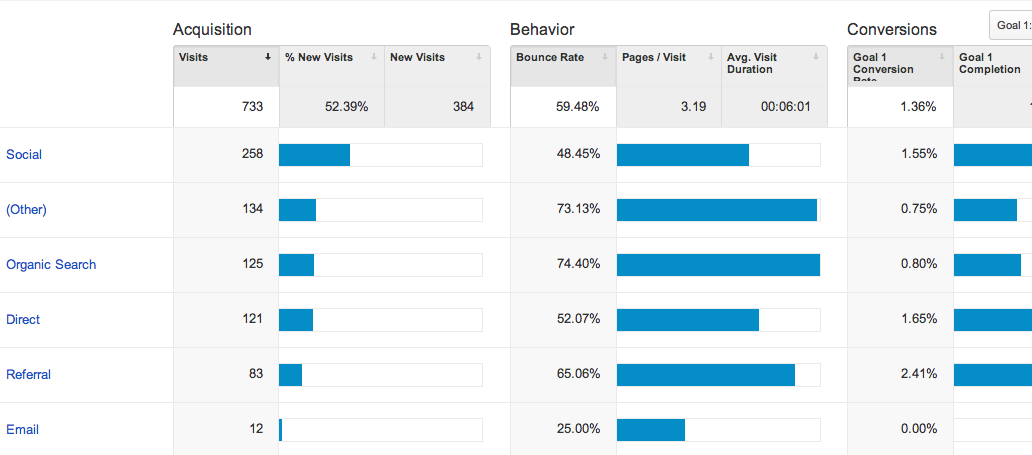What Data Is Google Analytics Goals Unable to Track: Find Out the Limitations
What Data Is Google Analytics Goals Unable to Track: Find Out the Limitations
Blog Article
Unveiling the Blind Destinations: Recognizing What Google Analytics Goals Can not Gauge
In the realm of electronic analytics, Google Analytics stands as a powerful device for tracking and evaluating on the internet user communications. Comprehending what Google Analytics goals can not measure is vital for acquiring an extensive sight of individual behavior and involvement.
Customer Actions on External Operatings Systems
Comprehending exactly how users communicate on external systems is important for optimizing on-line techniques. Outside platforms, such as social media sites networks, recommendation websites, and on the internet discussion forums, play a substantial duty in driving web traffic to a company's web site. By analyzing customer behavior on these platforms, businesses can get important understandings right into the efficiency of their advertising and marketing initiatives and the choices of their target market.
One trick aspect of individual behavior on external platforms is the referral source. By tracking where the users are originating from, companies can recognize which platforms are driving one of the most traffic to their internet site. This info can help firms assign their sources better, concentrating on the platforms that generate the best results.

Offline Conversions and Interactions
Evaluating user actions on exterior platforms gives important insights right into online approaches; nevertheless, thinking about offline conversions and communications is equally crucial for an extensive understanding of a firm's general efficiency. Offline conversions, such as in-store purchases or phone questions, play a significant role in several companies' success.

Acknowledgment Beyond Last Click
When diving into the realm of electronic advertising analytics, it comes to be vital to look past the single touchpoint of the last click for a much more detailed understanding of acknowledgment. While Google Analytics gives valuable insights into individual habits, counting solely on last-click attribution can be limiting - what data is google analytics goals unable to track. Attribution designs that exceed the last click use a much more nuanced sight of the customer journey, taking into consideration all the touchpoints that cause a conversion
Attribution beyond the last click allows marketing professionals to designate credit report to different interactions along the conversion path, providing a clearer photo of the efficiency of different advertising channels. By exploring multi-touch attribution models such as linear, time degeneration, or position-based acknowledgment, services can better allocate their marketing budget plans and optimize their methods for maximum impact.
Recognizing the impact of each touchpoint in the conversion process is crucial for making informed choices and optimizing ROI. By accepting attribution past the last click, companies can gain deeper Read More Here understandings into consumer actions and tailor their marketing initiatives a lot more properly.
Cross-Device and Cross-Browser Monitoring

Similarly, cross-browser tracking matches cross-device monitoring by capturing user habits as they change in between various web browsers. Comprehending just how individuals connect with websites on various internet important site browsers can aid marketing experts maximize their online experiences to ensure consistency and performance across different platforms.
Qualitative Data and Individual Intent
Comprehending individual intent via qualitative information evaluation is essential for developing targeted digital advertising and marketing approaches that reverberate with the demands and choices of the target audience. Qualitative data offers insights into the 'why' behind user activities, dropping light on motivations, emotions, and choices that measurable information alone can not catch. By examining individual comments, comments, and communications, marketers can reveal beneficial details regarding individual intent, allowing them to customize their messaging, material, and offerings to much better straighten with what their audience is seeking.
Qualitative information additionally assists in understanding the context in which users involve with a web site or app. This contextual understanding enables marketers to develop more pertinent and individualized experiences, inevitably driving greater interaction and conversion prices. By delving into customer intent with qualitative data analysis, services can acquire a deeper understanding of their target market, bring about a lot more reliable advertising methods that satisfy users' demands and expectations.
Conclusion
To conclude, Google Analytics goals have restrictions in measuring individual actions on outside platforms, offline conversions, acknowledgment beyond last click, cross-device and cross-browser monitoring, and qualitative data connected to user intent. what data is google analytics goals unable to track. It is essential for companies to be knowledgeable about these blind spots in order to supplement their data analysis with other tools and techniques to gain a much more comprehensive understanding of their audience and enhance their total digital advertising strategies
By evaluating customer actions on these platforms, services can obtain valuable insights into the efficiency of their advertising and marketing initiatives and the preferences of their target audience.
Evaluating customer actions on external platforms offers useful understandings right into online techniques; nevertheless, considering offline conversions and interactions is similarly essential for a thorough understanding of a company's overall performance.In digital advertising analytics, moving beyond last-click attribution to explore cross-device and cross-browser tracking is crucial for obtaining a holistic understanding of customer communications throughout numerous systems and devices. By analyzing user responses, remarks, and communications, marketers can uncover valuable information concerning individual intent, allowing them to tailor their messaging, content, a knockout post and offerings to much better line up with what their audience is seeking.
By diving into user intent through qualitative information evaluation, services can get a deeper understanding of their target audience, leading to more reliable marketing approaches that fulfill individuals' assumptions and requirements.
Report this page